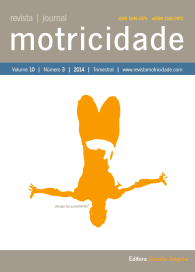Comparative analysis of the use of space in 7-a-side and 8-a-side soccer: how to determine minimum sample size in observational methodology
DOI:
https://doi.org/10.6063/motricidade.4138Resumo
In 2011-2012, the Spanish Soccer Federation changed the format of junior championship matches played between regional-level teams in Spain from a 7-a-side to an 8-a-side format. Soon afterwards, the regional federations followed in their footsteps by adapting their competition formats accordingly. Taking the use of space as a functional indicator of the quality of play in U-10 soccer, the present study examines the relative suitability of the 7-a-side and 8-a-side formats for developing the skills of young players. Of 9 hypothesis contrasts relating to the zone in which a move initiated in the attacking team’s goal area ended, only one was significant (p < .05) in the standard analysis, even though the contingency tables suggested there were genuine differences between the two formats studied. Consequently, the statistical software program GPower was used to determine the minimum sample size necessary to detect significant differences for four levels of statistical power: 95%, 90%, 85%, and 80%. Given the difficulty of organizing a new round of data collection, we simulated an increase in sample size while maintaining the characteristics of the original data (frequencies, variability, and distribution). The results obtained through the original sampling were then compared with those from the simulation.
Downloads
Publicado
Edição
Secção
Licença
Os autores dos manuscritos submetidos para publicação deverão ceder, a título integral e permanente, os direitos de autor (copyright) à revista Motricidade e às Edições Desafio Singular. A cedência de direitos de autor permite a publicação e divulgação do artigo em formato impresso ou eletrónico e entrará em vigor a partir da data de aceitação do manuscrito. Os autores concedem, ainda, os direitos para a revista Motricidade utilizar e explorar o respetivo artigo, nomeadamente para licenciar, ceder ou vender o seu conteúdo a bases de resumos/indexação ou outras entidades.
Nos termos da licença “Creative Commons”, os autores poderão reproduzir um número razoável de exemplares para uso pessoal ou profissional, mas sem fins comerciais. Nos termos da licença SHERPA/RoMEO, os autores poderão, ainda, disponibilizar/arquivar uma cópia digital final (versão postprint) do artigo no seu website ou no repositório científico da sua instituição.

